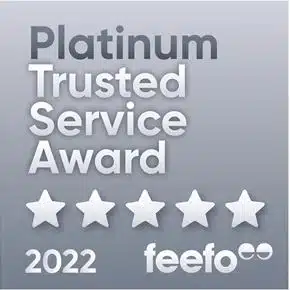Opting for a fixed rate home loan gives you certainty over your mortgage repayments. However, it also brings with it the potential risk or benefit of being stuck on a worse or better market rate. Nailing how long you fix your home loan for and figuring out what to do at the end of your fixed period are critical.
What are fixed rate home loans?
A fixed interest rate on a home loan means your rate is locked in for a set period, usually between one and five years (though some lenders offer fixed terms of up to ten years). It’ll remain the same regardless of any changes your lender makes to their rate throughout your fixed term. Once this period ends, your interest rate will revert to whatever your lender’s applicable variable rate is at that time.
If you’re currently repaying a home loan with a variable rate, you can switch to a fixed rate with your current lender or refinance to one with a new lender at any time. However, switching from one fixed rate loan to another means you’ll be exiting the fixed term early and will have to pay potentially steep cancellation fees as a result. The higher your rate and the longer the time left in your fixed period, the more expensive the fees will be.
Fixed rate home loans vs variable rate home loans
Unlike fixed interest rates, variable rates on home loans can fluctuate month-to-month in line with any adjustments your lender makes to their rates. This means your payments may change, which is good if rates drop but not so good if they rise.
Lenders will usually make their fixed rates higher than variable if interest rates are expected to go up and lower if they’re going to come down. Whether your lender’s fixed rate is higher or lower than their variable rate will give you an indication of what direction they think interest will go in over the coming weeks and months.
Perhaps the most important difference for mortgage payers is that fixed rates come with more restrictions on how much you can pay in additional contributions, while offset accounts generally can’t be used. These are both available for variable rate home loans.
Why do fixed rates on home loans change depending on the length of the term?
The reason fixed rates change based on the length of the term is that they’re attempting to predict where the market will go up to five years from now. To account for the uncertainty the further into the future they go, rates are generally higher for four to five-year fixed terms. Consider carefully whether a long-term fixed rate is right for you before you sign on the dotted line.
"One thing to do when you’re tossing up whether to fix your rate and for how long is to listen to the experts. When interest was at basement levels during the pandemic, it was a savvy move to lock them in for a long term. However, at a time where rates aren’t particularly low and are expected to fall in the coming months or years, fixing your rate for five years could lock you out of potential savings."

When five-year fixed terms might not be the best solution

The pros and cons of fixed rate home loans
Pros
-
Protection against rising rates
If rates go up throughout your fixed term, you won’t need to worry about them affecting your repayments. You’re protected as long as your rate is locked in.
-
Consistency in your repayments
Fixed repayments are great for budgeting, as you’ll know exactly how much is coming out of your account each week, fortnight or month for the duration of your term.
-
Low fuss
By opting for a fixed period on your home loan, you can essentially set it and forget about it until your term is up.
Cons
-
Rate drops aren’t accessible
If rates do happen to fall during your term, you won’t be in a position to take advantage. You’ll have to wait until the end of your term or break it early and pay hefty fees.
-
May pay more than necessary over a long fixed term
Longer fixed terms tend to come with rates noticeably higher than what’s on offer at the time, so you may end up paying at a higher rate as a result.
-
Greater restrictions on additional payments
You won’t be able to pay much above your required instalments or utilise an offset account to reduce the interest paid on your loan.
Is it best to fix your rate via a split loan?
Opting for a split home loan is one potential way to fix part of your mortgage. As the name suggests, a split home loan separates it in two: one half has fixed interest and the other has variable interest. You can adjust the split to your liking, meaning you could elect to fix 70% of the loan and keep the remaining 30% variable.
There are situations where a split loan could be a suitable option for you, such as if you can lock in a favourable rate for part of your home loan and keep the remaining portion on a variable rate so you can use your offset account and pay it down more aggressively. It affords you a level of budgeting security while still allowing you to make flexible repayments and take advantage (at least in part) of potential rate drops.
However, there are a few factors to consider before you split your home loan:
- Some lenders may charge fees on both home loan accounts
- If you want to refinance your home loan, the process may be more complicated (and costly)
- If your offset account balance is significant, you may not get the full value by splitting your loan
Splitting vs fixing your loan
Natasha is tossing up whether to fix her home loan interest rate or split her $600,000, 30-year home loan. She doesn’t have an offset account and isn’t too interested in making additional payments, but is considering whether to leave part of her loan open in case rates drop. She does some quick calculations to estimate how much a 50-50 split would cost compared to a full fixed period, both over three years:
| Home loan | Interest rate | Fortnightly repayment | Total interest over three years |
|---|---|---|---|
| 50% variable | 5.30% p.a. | $769 | $46,688 |
| 50% fixed | 5.75% p.a. | $808 | $50,737 |
| 100% fixed | 5.75% p.a. | $1,615 | $101,473 |
| Calculations are for illustrative purposes only. | |||
The total interest payable on a split loan, in contrast to the fully fixed loan, is $97,424 compared to $101,473 across the initial three-year period, which is a saving of just over $4,000. This calculation assumes that variable rates will remain consistent, which may not be the case in reality, and doesn’t include the additional fees associated with splitting the loan.
Even though she might save on interest with the split loan, Natasha decides the certainty and simplicity offered by a fixed interest rate suits her needs more.
Why apply for a home loan with Savvy
Help throughout the process
You'll be matched with an experienced mortgage broker who'll handle all the hard work for you from start to finish.
Trusted lenders
With a panel of reputable mortgage lenders, you can rest assured you'll be comparing high-quality options with your broker.
Paperless quote process
You can fill out a simple online quote via our form without having to worry about sorting through heaps of paperwork.
Is a fixed home loan safer than a variable rate?
It depends on how you define “safer”. Fixing the interest rate on your home loan does bring certainty, as you’re no longer at the mercy of the market for the next one to five years. Of course, if you want more security in your budget, fixing your rate means you won’t be leaving anything up to chance.
However, some might call it a risk to fix your rate and essentially take a punt on not missing out throughout your period. It’s worth considering your situation carefully or discussing it with your mortgage broker to see whether it’s the right move for you.






















